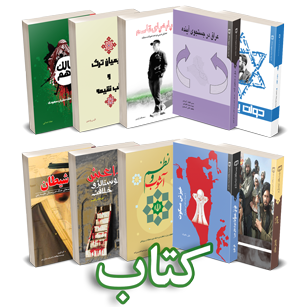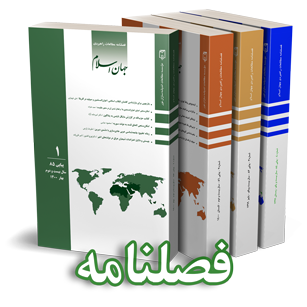چکیده
مکزیک تنها کشور آمریکای لاتین واقع در قسمت شمالی قارۀ آمریکاست. تاریخ استعماری و بعدها استثماری مشترک با کشورهای واقع در آمریکای مرکزی و آمریکای جنوبی، موجب شکلگیری و دوام دیرینۀ روحیۀ آمریکاستیزی یا همان ستیز با ایالات متحده در این کشور شده است. بنا بر مطالعات، آمریکاستیزی در مکزیک پدیدهای پیچیده و ظریف است که از جریانهای متعددی تشکیل شده است که از یک منبع سرچشمه میگیرند: «امتناع آمریکا از بهرسمیت شناختن مکزیک بهعنوان شریک برابر». مکزیک اولین کشوری است که با هژمونی آمریکایی از نوع ظاهرِ ادعاییِ خیرخواهانه و باطنِ پنهانِ عداوتآمیز آشنا شده است. بنابراین، در تلاش است تا خود را از این رابطۀ پسااستعماری و نامتقارن ـ که ناشی از امپریالیسم خارجی ایالات متحده است ـ رها کند. در این راستا، رویارویی و تقابل مستقیم با ایالات متحده، بههیچوجه در دستورکار مکزیک قرار ندارد. در عین حال، مکزیک تمایلی برای عقب ماندن از قافلۀ گذار جهانی بهسمت جهان چندقطبی و تقویت چندجانبهگرایی ندارد. این کشور هماکنون در تلاش است تا با پناه بردن به مفاهیم صلح، مدارا، عدم مداخله، احترام به حقوق بینالملل و حاکمیت کشورها سیاست خارجی خود را از سلطۀ ایالات متحده برهاند و این همان آمریکاستیزی مکزیکی است.
تحقیق پیش رو در تلاش برای یافتن پاسخ به این پرسش است: «با در نظر گرفتن سرگذشت و شرایط کنونی روابط مکزیک و ایالات متحده، کارکردهای آمریکاستیز این کشورِ آمریکای لاتین را چگونه میتوان ارزیابی کرد؟» بدینترتیب، پژوهش حاضر با استفاده از نظریۀ پسااستعماری و روش توصیفی ـ تحلیلی درصدد است تا خاستگاه و ابعاد آمریکاستیزی و تجلی آن را در دولتهای مختلف و همچنین در سیاست خارجی این کشور تبیین کند.
واژگان کلیدی
مکزیک، آمریکاستیزی، روحیۀ ضدآمریکایی، پسااستعمارگرایی
عنوان مقاله [English]
Threats from the expansion of NATO presence in the region for Iran
نویسنده [English]
Mohammad Javad Soltani
چکیده [English]
Abstract
Over the past hundred years, West Asia has seen two types of security organizations: trans-regional security organizations that have infiltrated the region, such as the Santo Pact, and intra-regional security organizations. The plan to expand NATO activities in this region dates back to the mid-1980s, and now Trump calling for more serious activity in West Asia. Given the complex situation in the region in terms of the concentration of crises between countries and the Arab countries’ acceptance of this organization, it is possible to form a new security framework in the region that can change the equation of deterrence between Arab countries against Iran. This is especially important for Iran, where most of the collective and security arrangements in the region continue to be seen as a threat of Iran. What will be the consequences of the development of NATO activities in West Asia for Iran, and how will it affect its deterrence strategy? It seems that the presence of this security organization will increase the ground for confrontation within the region and increase the movements against Iran, because with the presence of NATO, Iran will face a cycle of trans-regional deterrence. While this country has a limited regime-building power compared to its rivals.
Syria’s geographical position is such that it provides the ground for geographical connectivity between Iran, Iraq and Lebanon and is a link between this chain, and this issue has given this country an important role and position in the eyes of the Islamic Republic of Iran and because of its support for the Axis of Resistance, this country is referred to as the “backbone of the Axis of Resistance.”
Following the crisis in Syria, as a strategic ally of Iran in many issues in the region, the Islamic Republic entered Syria as a supporter of this country and took steps to support it in various political, military, security, economic and media fields.
واژگان کلیدی[English]
Keywords
West Asia, deterrence, military balance, NATO, Iran
عنوان مقاله [العربية]
تهديدات لتطوير وجود الناتو في المنطقة بالنسبة لإيران
چکیده [العربية]
المخلص
على مدى المائة عام الماضية، شهدت منطقة غرب آسيا نوعين من الوكالات الأمنية: وكالات الأمن عبر الإقليمية التي تسللت إلى المنطقة، مثل حلف سانتو، ووكالات الأمن داخل المنطقة. تعود خطة توسيع أنشطة الناتو في المنطقة إلى منتصف الثمانينيات، والآن يدعو ترامب إلى نشاط أكثر جدية في غرب آسيا. بالنظر إلى الأوضاع المعقدة في المنطقة من حيث تركز الأزمات بين الدول وقبول الدول العربية لهذه المنظمة، فمن الممكن تشكيل إطار أمني جديد في المنطقة يمكن أن يغير معادلة الردع بين الدول العربية ضد إيران. . هذا مهم بشكل خاص بالنسبة لإيران، حيث لا يزال يُنظر إلى معظم الترتيبات الجماعية والأمنية في المنطقة على تهديد الإیران. ماذا ستكون عواقب تطوير أنشطة الناتو في غرب آسيا بالنسبة لإيران، وكيف ستؤثر على استراتيجية الردع الخاصة بها؟ ويبدو أن وجود هذا التنظيم الأمني سيزيد من أرضية المواجهة داخل المنطقة ويزيد من الحركات ضد إيران. لأنه بوجود الناتو، ستواجه إيران حلقة ردع عابرة للمناطق. في حين أن هذا البلد لديه قوة محدودة لبناء نظام مقارنة بمنافسيه.
الكلمات المفتاحية
غرب آسيا، الردع، التوازن العسكري، الناتو، إيران
– Baldor, Lolita (2019). “US to ask NATO to pay more to protect Saudi Arabia from Iran”, https://apnews.com/47f554cf90564ac5869579f1fa37633a
– Baldor, Lolita (2019). “US gets no commitment from NATO for help on Iran threat”, https://apnews.com/d543b2bb12fb4615ae8acfcedd2b6444
– Boot, Max (2019). “NATO is on life support — and Trump’s the one who put it there”, https://www.washingtonpost.com/opinions/2019/12/04/nato-is-life-support-trumps-one-who-put-it-there/
– Deni, John (2020). “Why expanding NATO to the Middle East is a terrible idea”, https://www.washingtonpost.com/opinions/2020/01/10/why-expanding-nato-middle-east-is-terrible-idea/
– Haddick, Robert (2012). “The Persian Gulf Needs Its Own NATO”, https://foreignpolicy. com/ 2012/05/18/the-persian-gulf-needs-its-own-nato/
– Loup, Jean (2012). “NATO’s dealing with a different Gulf now”, https:// www. nato.int/docu/review/articles/2012/12/06/nato-s-dealing-with-a-different-gulf-now/ index.html
– Sament, Daniel (2020). “To deter Iran, the gulf states need stronger Navies”, https://www.atlanticcouncil.org/blogs/menasource/to-deter-iran-the-gulf-states-need-stronger-navies/
– Oprysko, Caitlin (2020). “’NATO plus ME’: Trump proposes NATO expansion into Middle East”, https://www.politico.com/news/2020/01/09/trump-nato-expansion-proposal-096772
– World’s Top Exports (2019). “Top 15 Crude Oil Suppliers to China”, http://www. worldstopexports. com/top-15-crude-oil-suppliers-to-china/
– Plaja, Ruben (2018). “Projecting Stability: an agenda for action”, https://www.nato.int/ docu/ review/articles/2018/03/13/projecting-stability-an-agenda-for-action/index.html
– Hellenic shipping news (2019). “Tanker Market: India crude oil imports outlook amid U.S. Sanctions” https://www.hellenicshippingnews.com/tanker-market-india-crude-oil-imports-outlook-amid-u-s-sanctions/
– Anthonney Cordesman (2020). “Iran and the Changing Military Balance in The Gulf – Net Assessment Indicators”
– Samaan, Jean (2020). “The Limitations of a NATO-Middle East Military Cooperation”, https://carnegieendowment.org/sada/81740
– Stolton, Samuel (2020). “Is NATO about to become ‘more involved’ in the Middle East?” https://www.aljazeera.com/indepth/features/nato-involved-middle-east-200113212641341.html
– NATO Parlimentary Assembely (2020). “NATO Allies urged to develop inclusive approach to Iran”, https://www.nato-pa.int/news/nato-allies-urged-develop-inclusive-approach-iran NATO (2011). “Istanbul Cooperation Initiative (ICI)”, https://www.nato.int/cps/ic/natohq /topics-58787.htm?
– Izumi, Nakamitsu (2017). “Annual NATO Conference on WMD Arms Control, Disarmament and Non-Proliferation”, https://s3.amazonaws.com/unoda-web/wp-content/uploads/ 2017/06/hr-speech-NATO-conference-WMD-arms-control-29-May-2017. pdf. Pp. 3.
– NATO (2018). “NATO Parliamentary Assembly visits NATO”, https://www.nato. int/cps/ en/ natohq/ news_152310.htm?selectedLocale=en
– Rydell, M (2017). “Syria: Iran’s and Saudi Arabia’s newplayground?” http:// lup.lub.lu.se/ student- papers/record/8909212/file/8910952.pdf
– Farouk, Yasamine (2019). “How Saudi Arabia Could Make a Bold Strategic Move on Iran”, https://carnegieendowment.org/2019/06/28/how-saudi-arabia-could-make-bold-strategic-move-on-iran-pub-79399
– Bishara, Marwan (2019). “Saudi Arabia and Iran after the summits of discontent: Was Riyadh able to unite Arab and Muslim leaders against Tehran?” https://www.aljazeera.com /indepth/opinion/saudi-arabia-iran-summits-discontent-190604101807753.html
– Malley, Robert (2019). “۱۰ Conflicts to Watch in 2019” https://www.crisisgroup.org/ global/10-conflicts-watch-2019
– Daniel Wagner, Giorgio Cafiero (2018). “The Simmering Rivalry Between Qatar and Saudi Arabia”, https://www.huffingtonpost.com/daniel-wagner/the-simmering-rivalry-bet-b-3585424. html
– Madawi AlRasheed (2017). “Saudi Arabia’s Regional Foreign Policy is Fracturing the Gulf”, http://www. sharqforum.org/2017/09/14/saudi-arabias-regional-foreign-policy-is-fracturing- the-gulf/
– Rogin, Josh (2019). “How Trump can punish Iran, without starting a war”, https:// www. washingtonpost.com/ opinions/2019/09/18/how-trump-can-punish-iran-without-starting-war/
– DeMaio, Matthew (2017). “In Trump’s Battle with Iran, ‘Arab NATO’ Would Be His Saddam Hussein”, https://muftah.org/trumps-battle-iran-arab-nato-saddam-hussein/#. Wr4kh C5ubIU
– James Stavridis (2015). “ The Arab NATO”, http://foreignpolicy.com/2015/04/09/the-arab-nato- saudi-arabia-iraq-yemen-iran/
– Jeff Daniels (2017). “Even with closer Saudi-US ties, Arab NATO idea was downright ‘dangerous’”, https://www.cnbc.com/2017/05/23/even-with-closer-saudi-us-ties-arab-nato-idea- was-dangerous. html
– Christopher bolan (2017). “So What’s Wrong With an Arab NATO?”, https:// www.realcleardefense.com/articles/2017/05/19/so_whats_wrong_with_an_arab_nato_111415.html




